Mango mousse cake is an easy dessert featuring a layer of moist vanilla cake, fresh mango mousse, and swirls of mango puree. This light and airy mousse cake is a perfect summer dessert for the mango season!
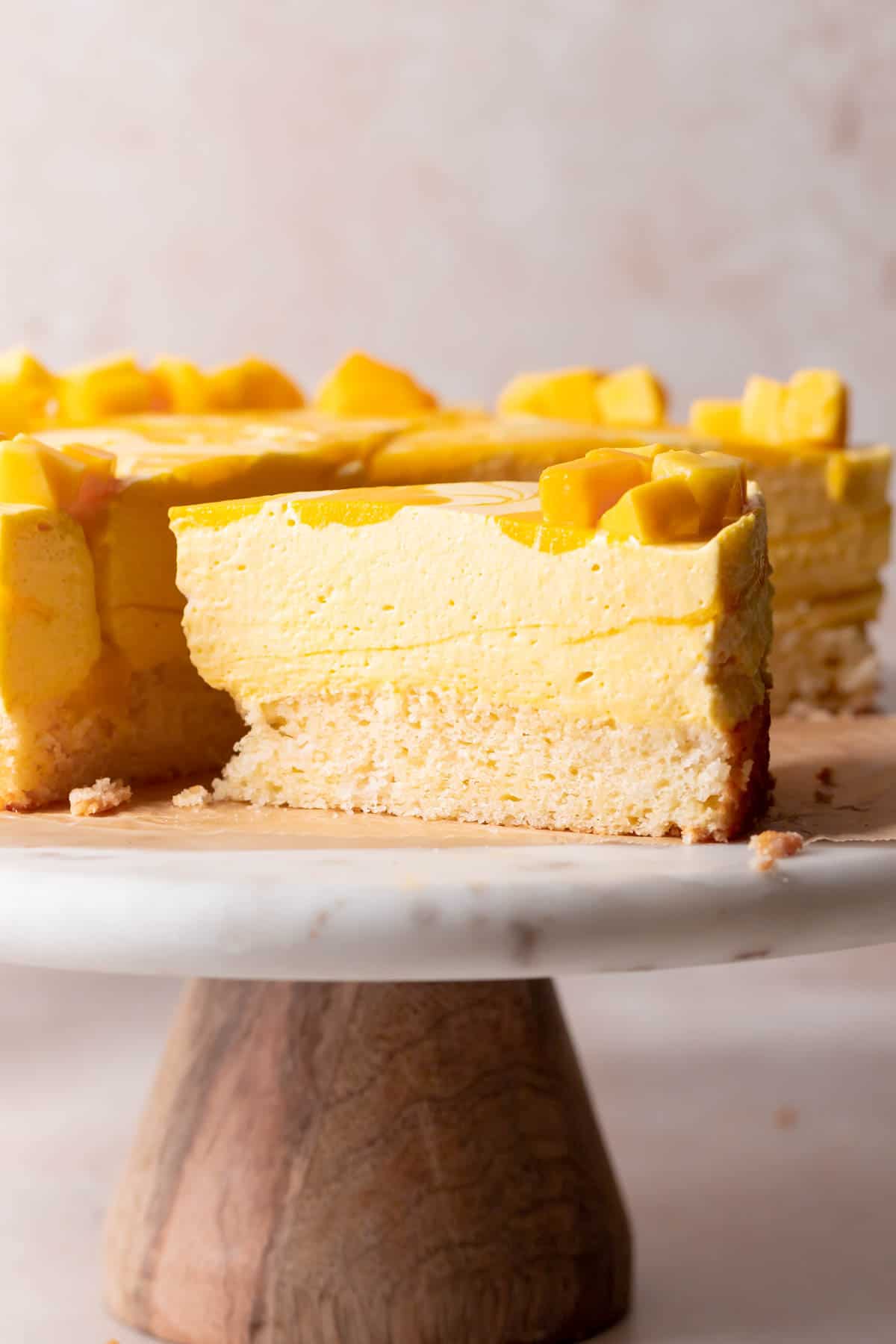
I have loved making mousse cakes since pastry school, so I knew I needed a recipe on Cambrea Bakes! It is an easy (yet totally elegant) dessert that is perfect when you want something light and not too heavy.
My mango crepe cake and mango cookies inspired me to keep playing with mango flavors, and thus this mango mousse cake was born! This recipe is too beautiful (and delicious) to not share at your next summer occasion!
If you love summer-inspired recipes, you’ll love my Mint Chocolate Ice Cream Cake!
Table of Contents
why you’ll love this mango mousse cake
- The cake base is a moist vanilla cake that is the perfect base for the light and airy mousse. It’s the same base recipe as my lemon bar cake!
- Made with fresh or frozen mango, it has a creamy mango mousse filling that is packed with juicy mango flavor!
- Whether you need it for a special occasion or a birthday, this mango treat is a delicious dessert for any occasion!
ingredient notes & substitutions
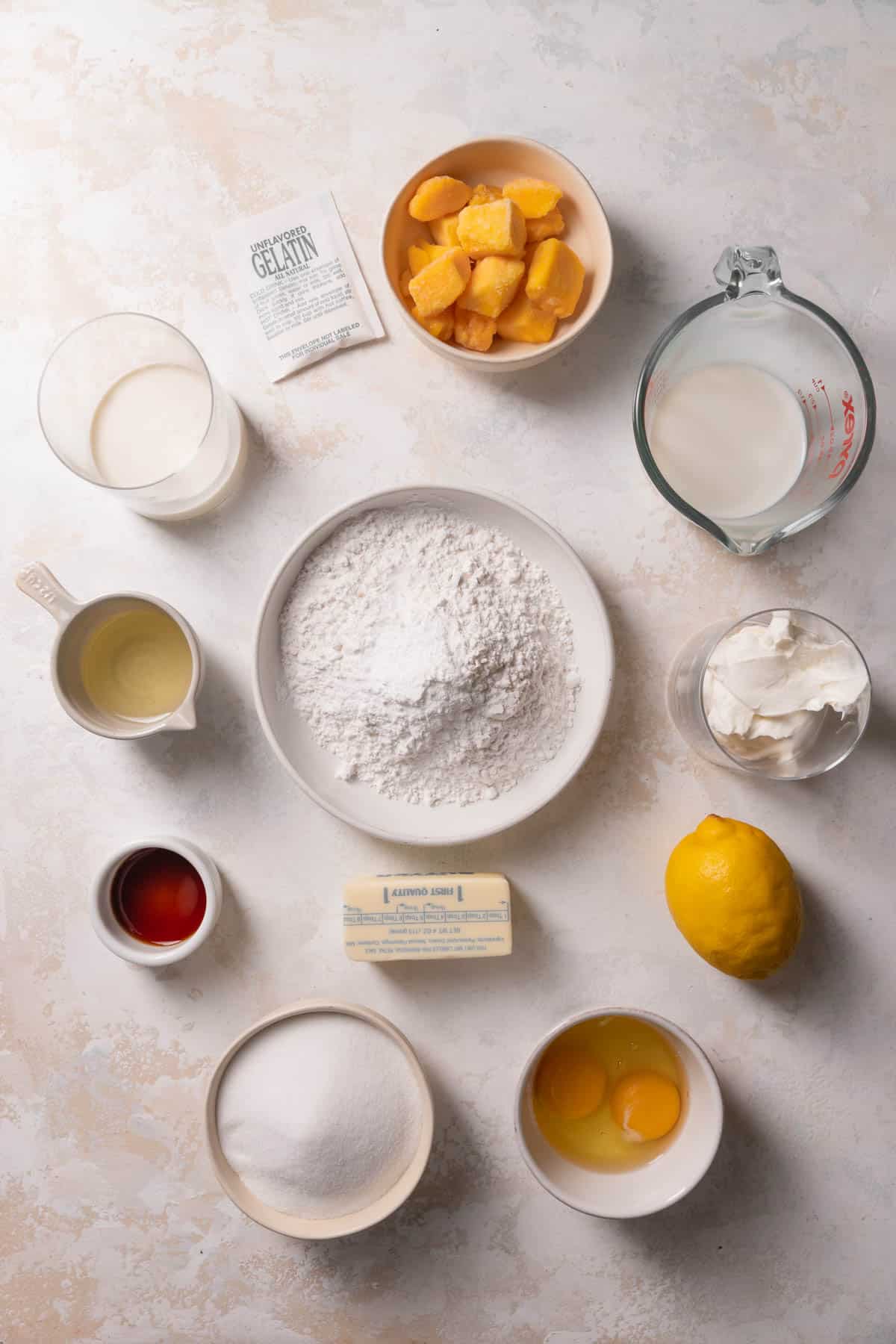
Mangoes: I tested this mango mousse cake with frozen and fresh mango, and I recommend frozen for convenience. Otherwise, you will have to cut up a lot of fresh mangoes! If you want to use fresh ones, make sure they are ripe.
Gelatin: Unflavored gelatin is used to set the mousse. I don’t recommend using agar agar, because it does not have an equal 1:1 ratio for substituting.
Sour cream: You can substitute it with full-fat plain Greek yogurt if needed. This ingredient is important for bringing richness and moisture which keeps it moist for days, similar to my Biscoff cake.
Whole milk: Like sour cream, whole milk provides moisture and richness to the cake. I don’t recommend using plant-based milk or it will be drier.
Find the full ingredient measurements and instructions in the recipe card below!
recipe instructions
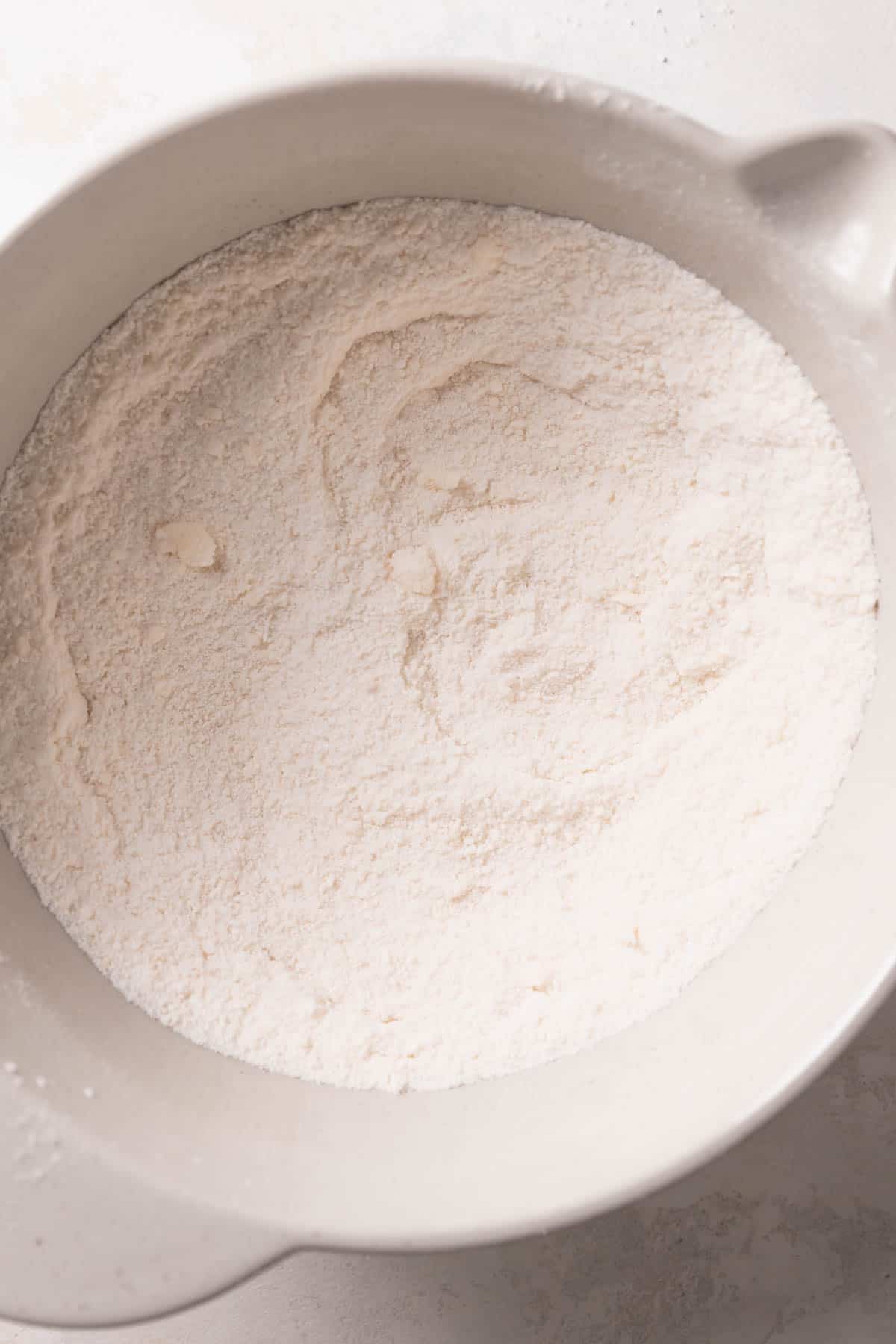
Step 1: Combine the dry ingredients and butter. In a stand mixing bowl, combine the dry ingredients. Then mix in the cubed unsalted butter until it resembles coarse sand.
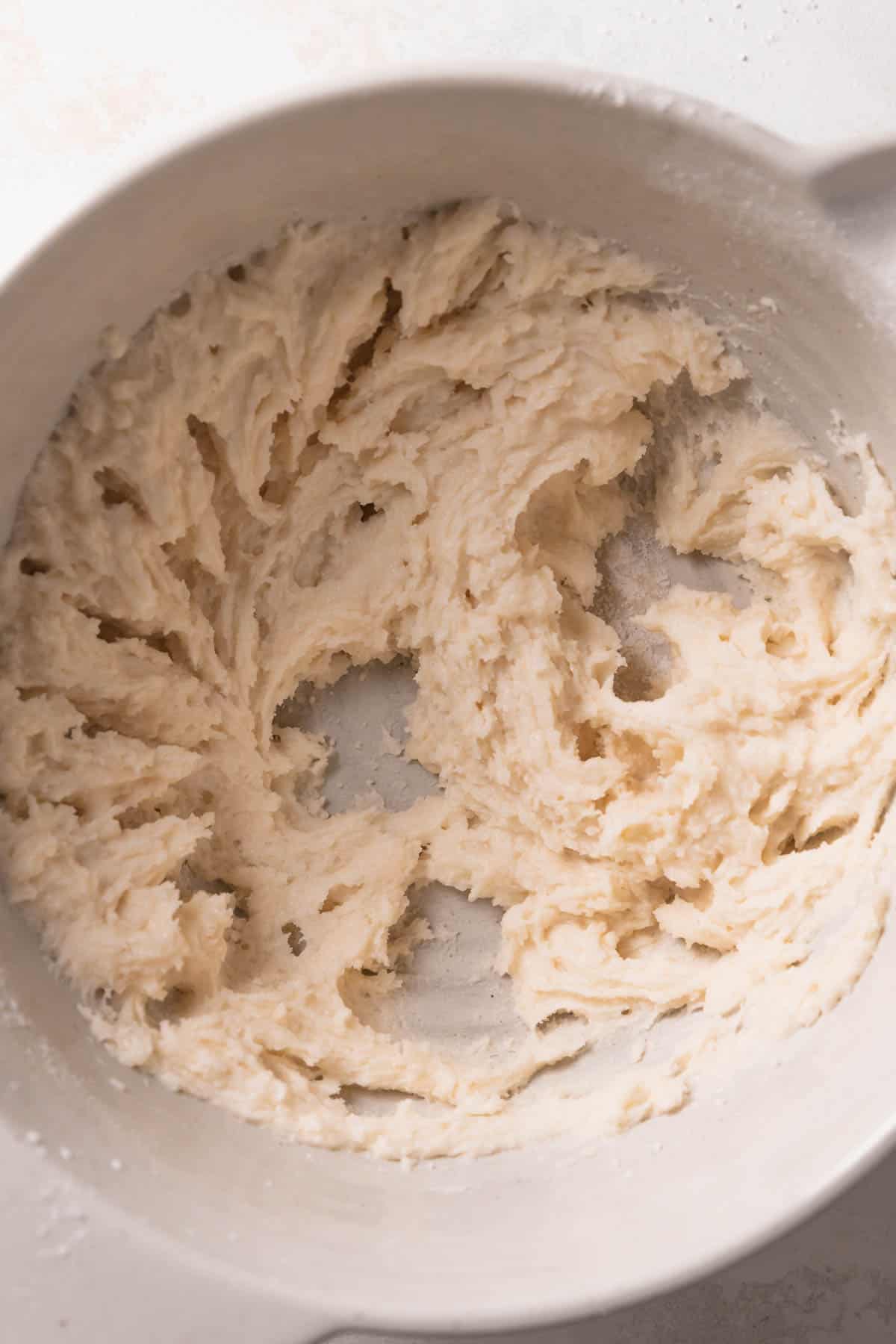
Step 2: Mix in the wet ingredients. Mix in the sour cream and canola oil until it turns into a paste. Scrape down the bowl, then stream in the eggs, milk, and vanilla extract.
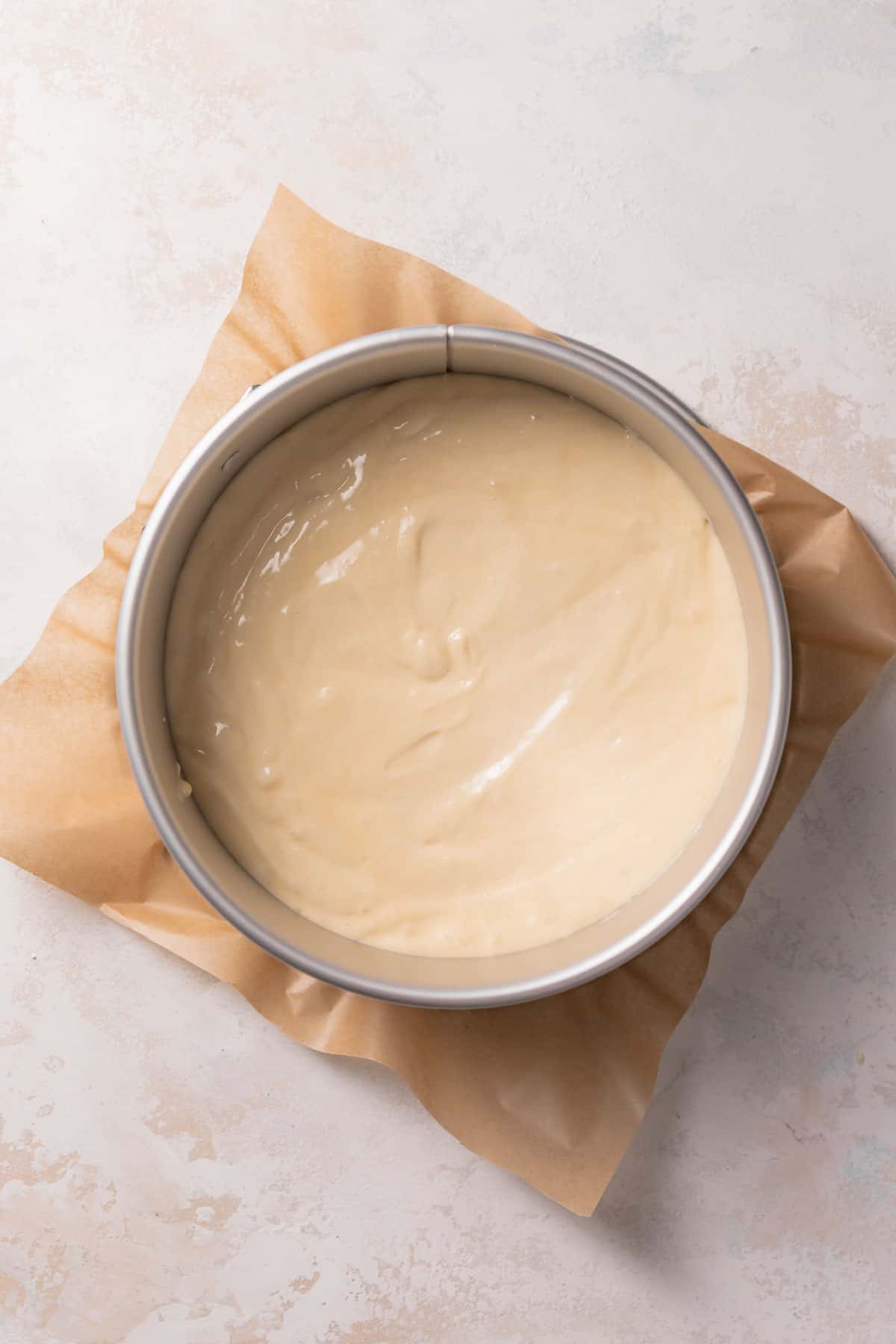
Step 3: Pour into a spring-form pan. Pour the cake batter into the bottom of the spring form pan. Bake for 15-17 minutes, then let the pan cool completely on a wire rack.
The cake MUST be cool before assembling or everything will melt! Once it is cool, remove and wash the sides of the pan. It will ensure a clean removal once the mousse is on top.
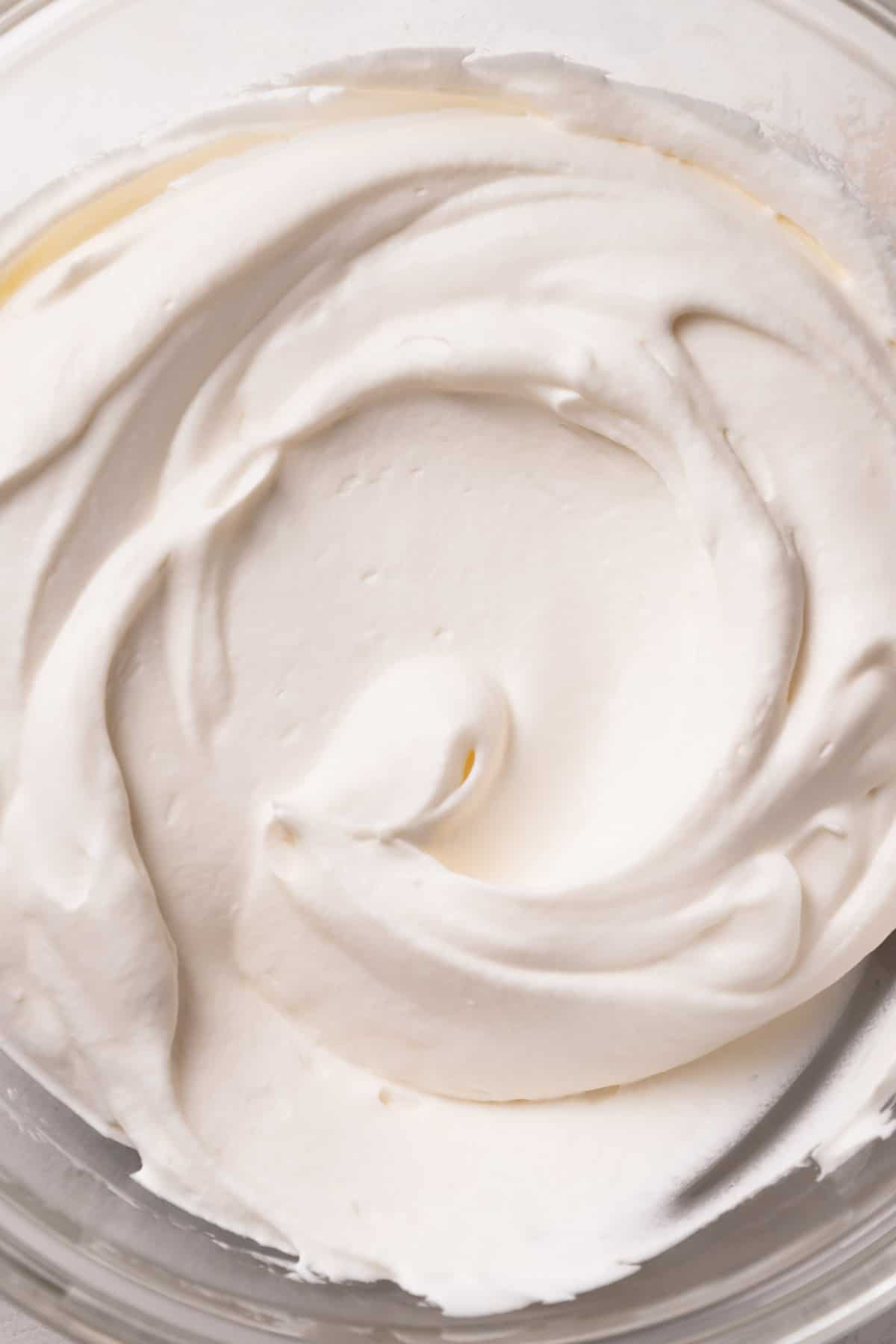
Step 4: Make the whipped cream. Whisk the heavy cream and powdered sugar with a stand mixer on high speed until soft peaks form.
Transfer it to a large bowl and keep it in the fridge until ready to use.
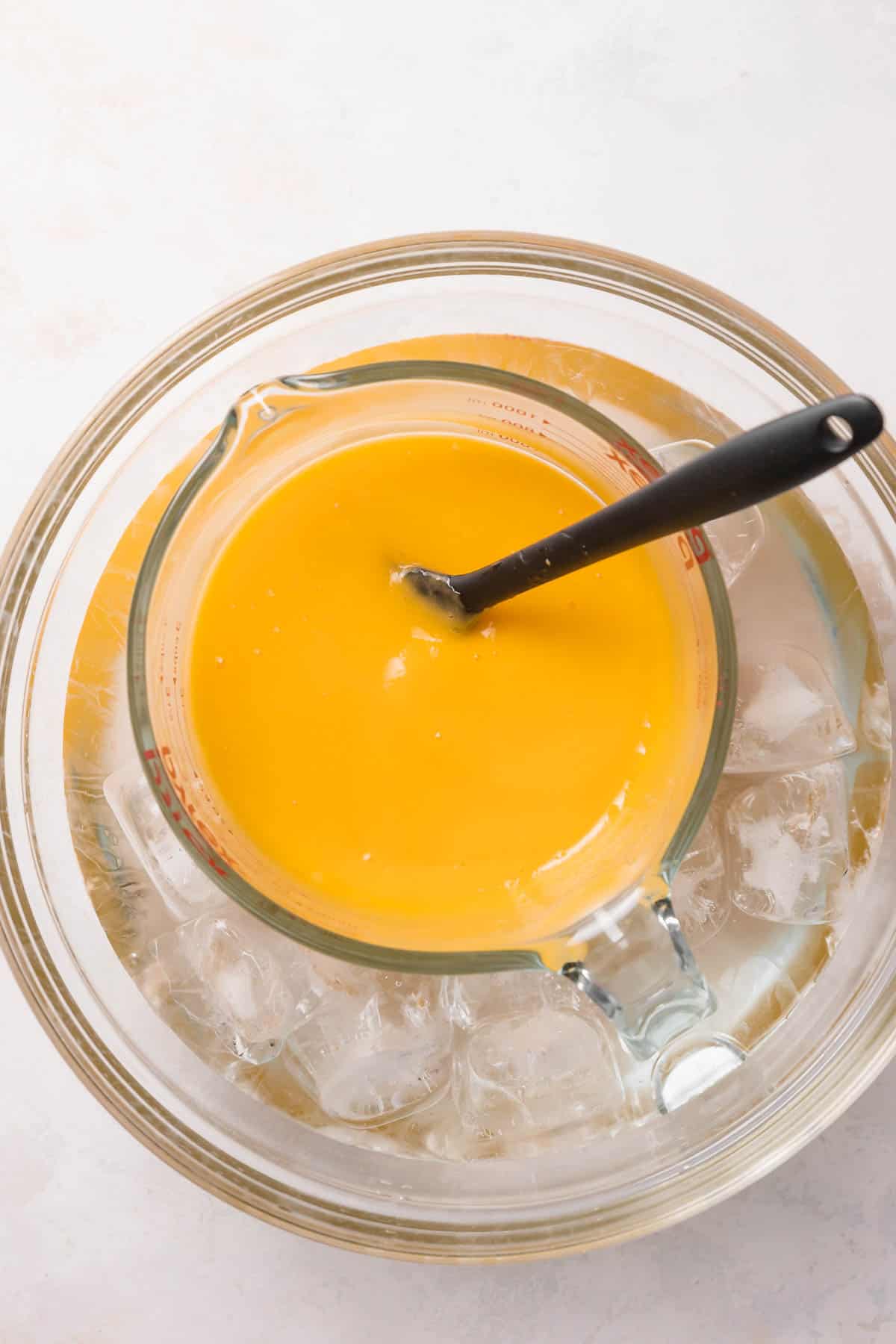
Step 5: Make the mango puree. Cook the diced mango, sugar, and lemon juice in a pot until softened. Then, blend until very smooth.
Pour it back into the pot and stir in the bloomed gelatin. Cook for 2-3 minutes longer, then chill the mango puree in an ice bath until it feels room temperature.
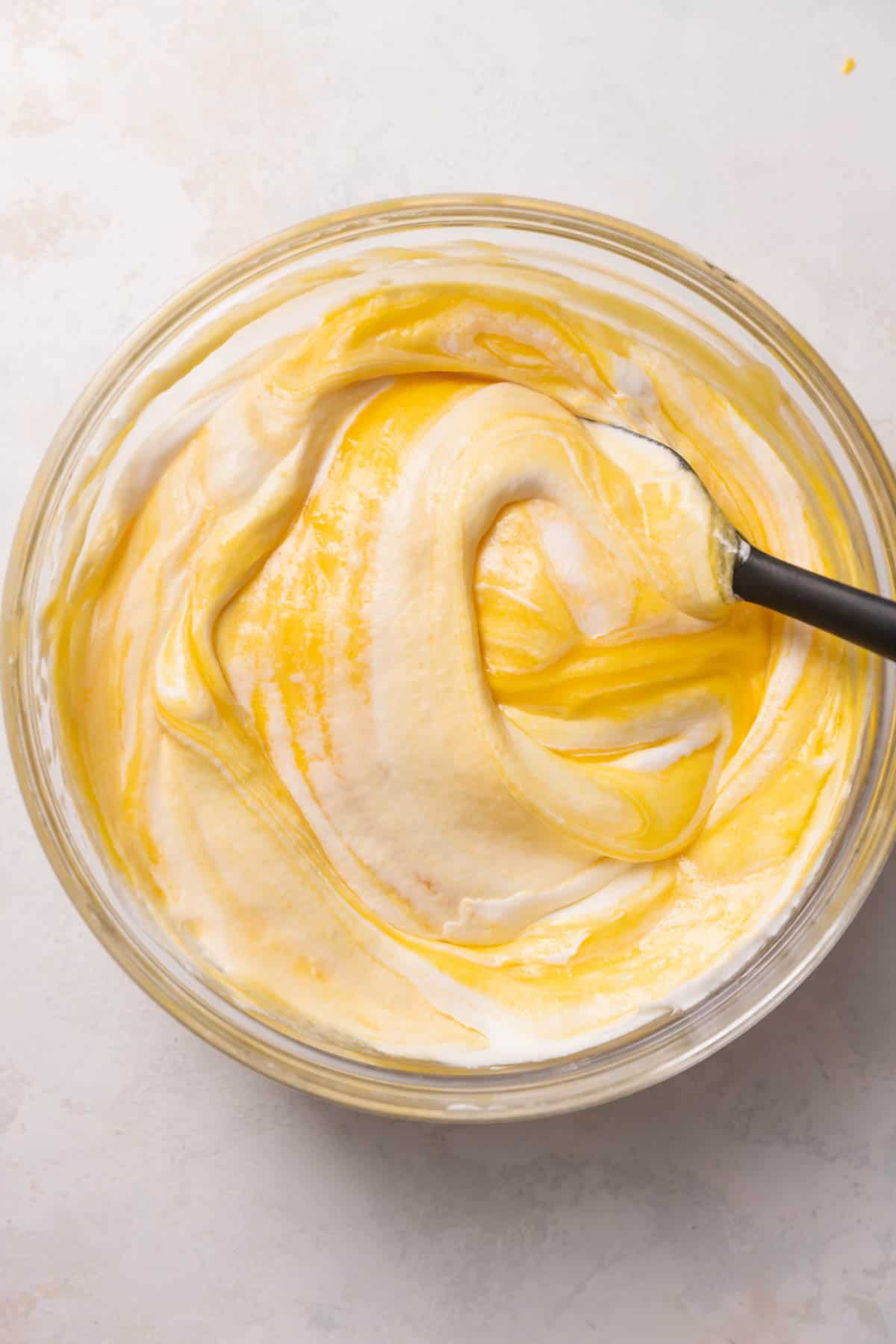
Step 6: Fold the mango mousse. Pour the mango puree into the bowl of whipped cream. Use a rubber spatula to gently fold the two together until homogenous.
Maybe mango isn’t your thing…I get it! How about my chocolate mousse pie instead? It’s so rich and chocolatey!
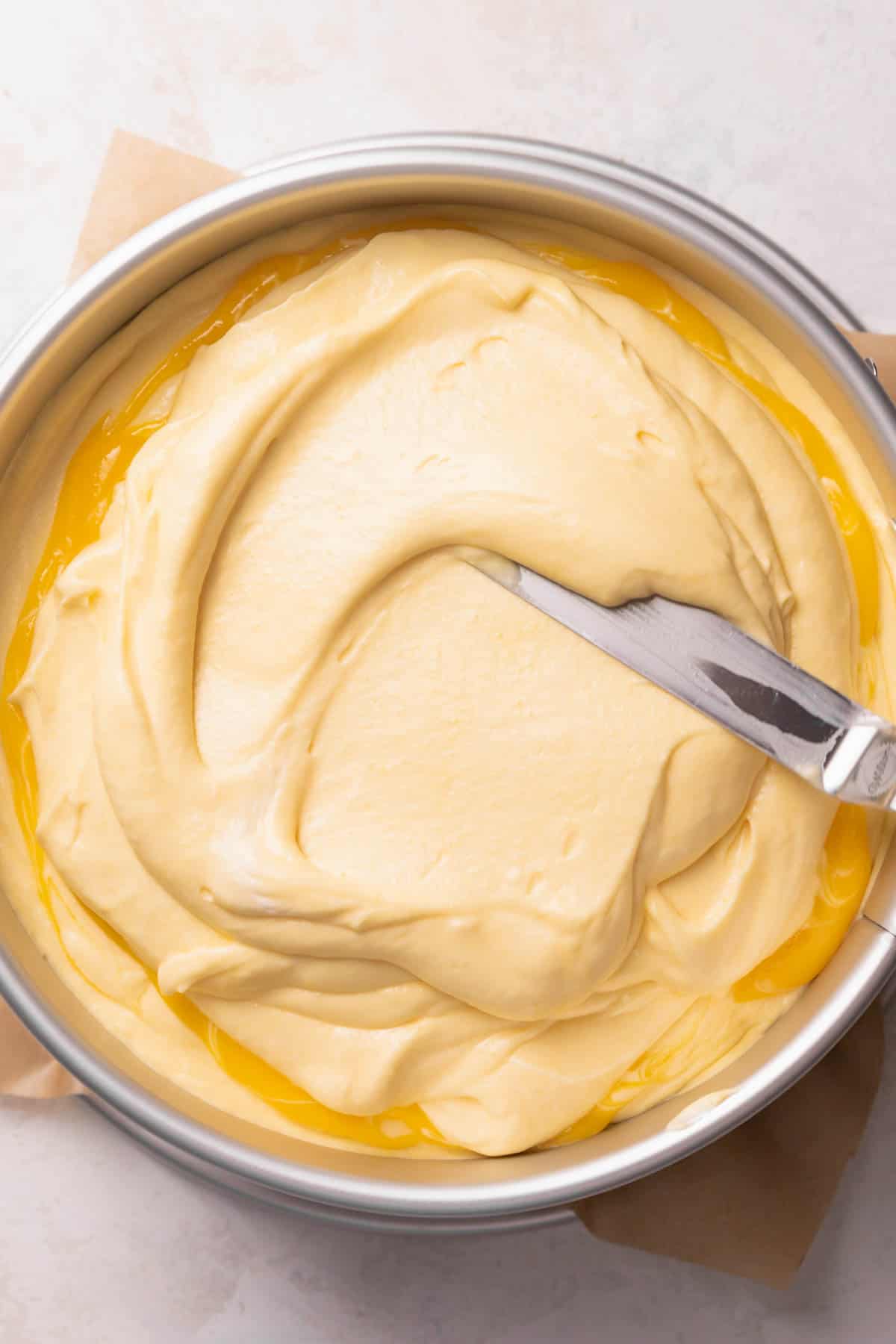
Step 7: Make the mousse layer. Evenly spread half of the mango mousse on top of the cake layer. Then spread half of the reserved mango puree over the top of the mousse.
Layer the rest of the mango mousse next.
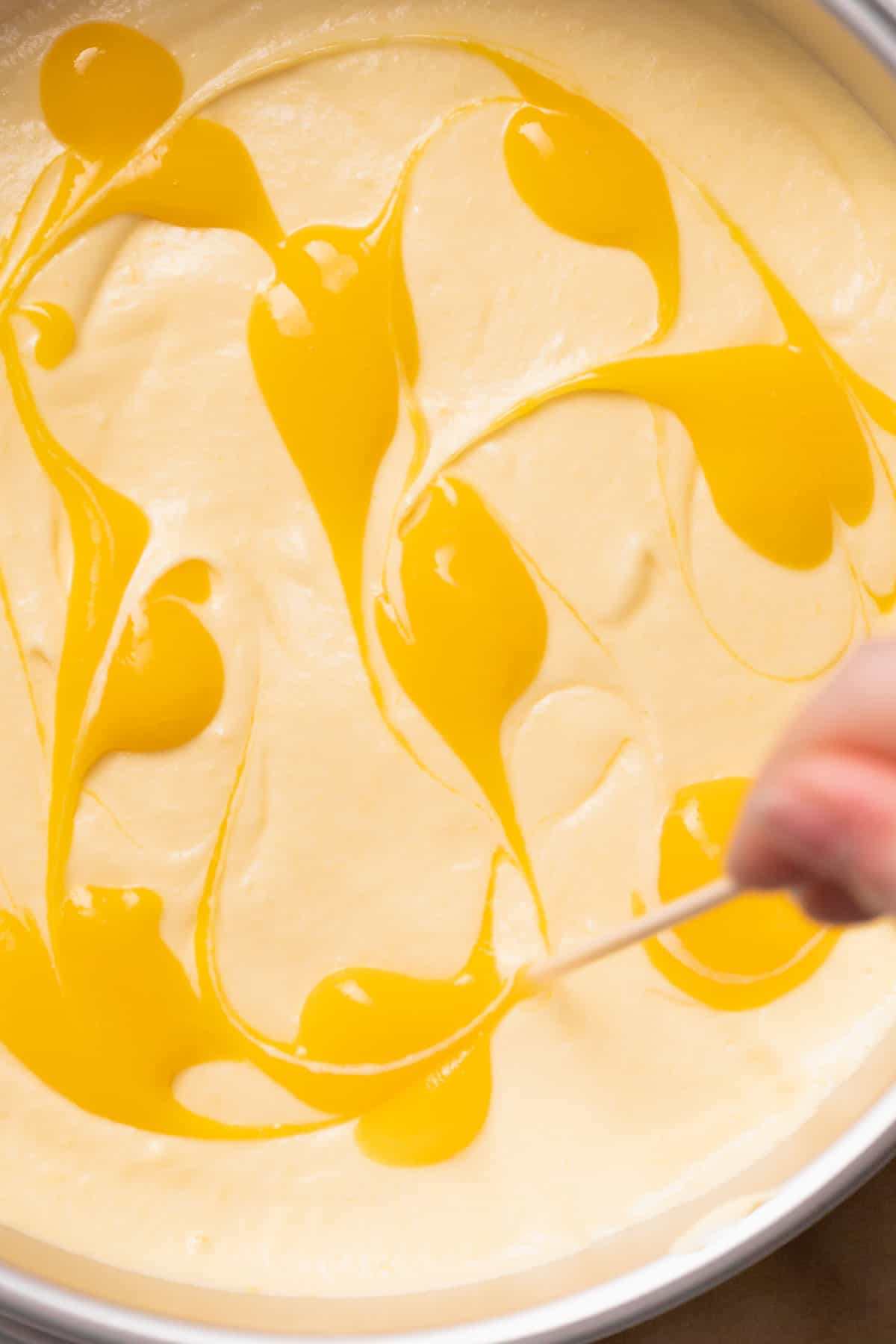
Step 8: Layer the mango puree. Dollop the rest of the mango puree on top and use a toothpick to swirl it into the mousse.
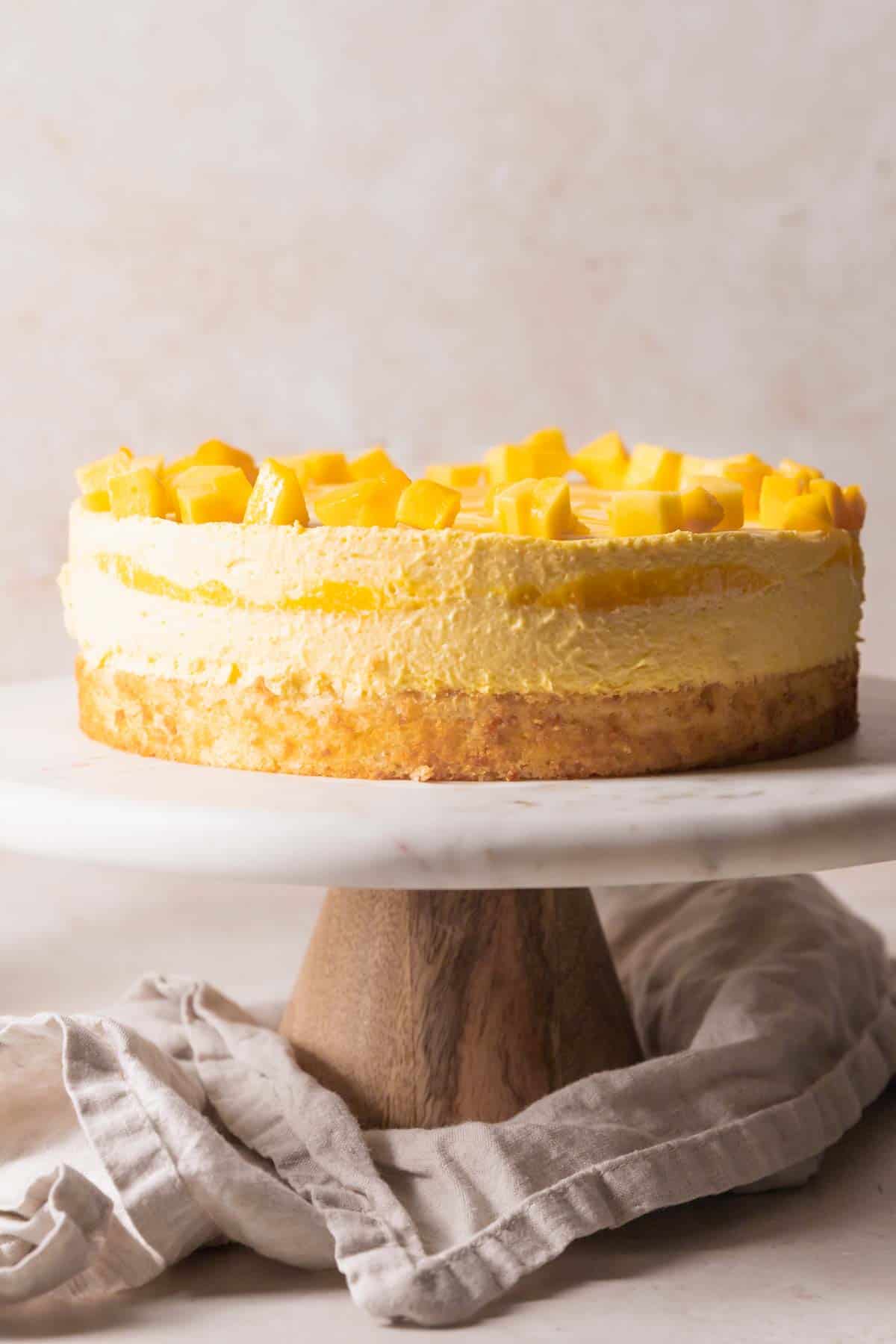
Step 9: Chill before serving. Before serving, chill it in the fridge for at least 3-4 hours, overnight is best! You can garnish the top edge with diced mangoes or serve it as is. Enjoy your mango mousse cake!
expert baking tips
- Use a kitchen scale. Baking with a scale is much more accurate than cup measurements. To convert this recipe, click the “metric” button next to the ingredients title on the recipe card. If you do not have a scale, use a spoon to fluff the flour first, then spoon it into your measuring cup.
- Use a blender for the puree. I recommend using a blender or immersion blender and not a food processor or the puree will not be as smooth.
- Fresh varieties of mangoes to use: If you use fresh mangos, I recommend ripe, fragrant mangoes such as Alphonso, but any sweet variety will work.
- Don’t let the puree get too cold. Once the puree is in the ice bath, set a timer and stir frequently to cool it quickly. The puree should feel room temperature or slightly cooler, but not cold. If it gets too cold the gelatin will set and the mousse will end up clumpy.
storage & freezing
Store any leftovers in an airtight container for up to 5 days in the fridge.
If you prefer to freeze some for later, store it in an airtight container in the freezer for up to one month.
recipe faqs
No, mango juice is mostly liquid and will not work the same! You can purchase mango puree in cans if you can find them, I always find them in Asian markets!
Definitely! I recommend doubling the recipe to ensure the cake layer is thick enough to compensate for the larger diameter.
No, you MUST use gelatin if you want it to be set properly.
If the mousse is not set, it’s likely you didn’t use all of the required gelatin, it hasn’t chilled long enough, or the whipped cream was under-whipped.
Over-whipping the cream for the mousse will result in a grainy, lumpy mousse texture. It won’t be light and airy!
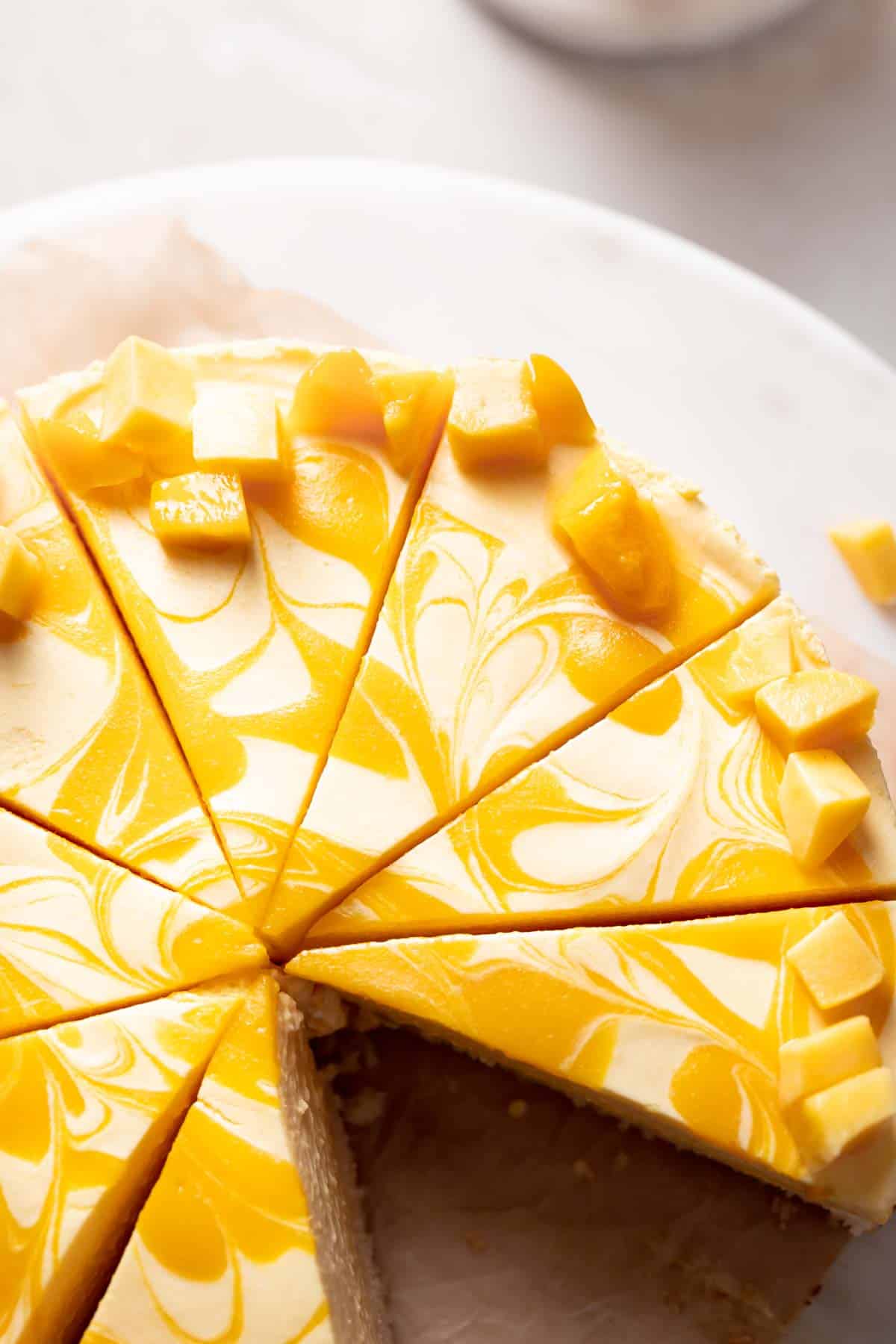
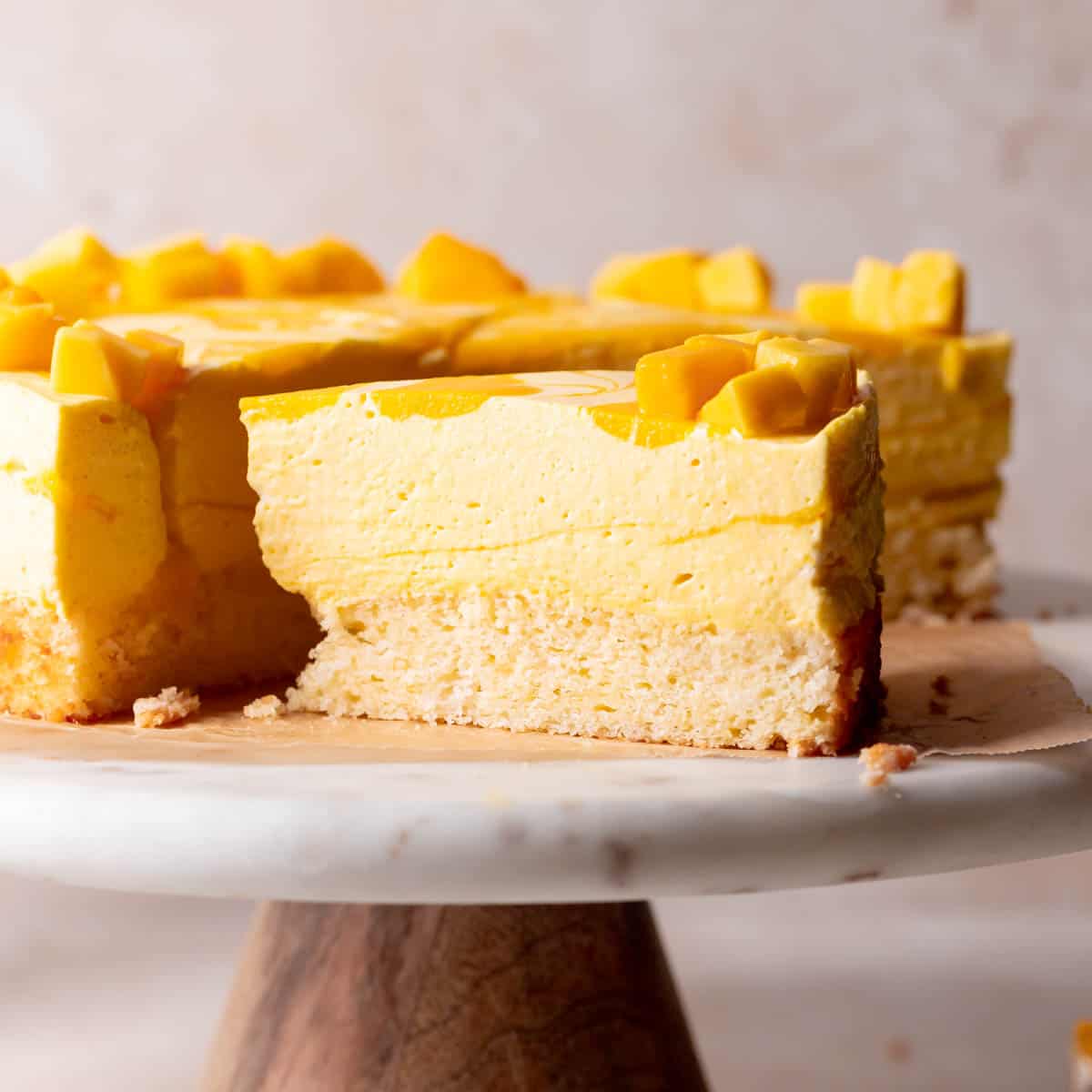
Creamy Mango Mousse Cake
Equipment
Ingredients
Vanilla Cake
- ¾ cup cake flour , *see notes for measuring*
- 1/2 cup granulated sugar
- 1 teaspoon baking powder
- 1/8 teaspoon fine sea salt
- 2 tbsp cubed unsalted butter, room temperature
- ¼ cup sour cream, room temperature
- 1 tbsp canola or vegetable oil
- 1 large egg, room temperature
- ¼ cup whole milk, room temperature
- 1 teaspoon vanilla extract
Whipped Cream
- 1 1/2 cups heavy whipping cream
- ½ cup powdered sugar
Mango Puree
- 4 cups frozen or fresh cubed mango
- 1 tbsp granulated sugar
- 1 tsp lemon juice
- 2 tsp unflavored gelatin
- 1 tbsp cold water
Instructions
- Line an 8" springform pan with parchment paper on the bottom, then lock it into place. Preheat the oven to 350 F/180 C.
- In a stand mixing bowl, combine the flour, sugar, baking powder, and salt. Then mix in the cubed butter until it resembles coarse sand.¾ cup (80 g) cake flour, 1/2 cup (100 g) granulated sugar, 1 teaspoon baking powder, 1/8 teaspoon fine sea salt, 2 tbsp (28 g) cubed unsalted butter
- Mix in the sour cream and oil until paste-y, about 30 seconds. Scrape down the bottom and sides of the bowl. Whisk the eggs, milk, and vanilla together. Stream it into the mixing bowl on low speed, until just combined. Pour the batter into the prepared cake pan.¼ cup (56 g) sour cream, 1 tbsp (13 g) canola or vegetable oil, 1 (50 g) large egg, ¼ cup (57 g) whole milk, 1 teaspoon vanilla extract
- Bake for 15-17 minutes, or until a toothpick inserted into the centers comes out covered in a few moist crumbs. Set it aside to cool completely. Once cool, run an offset spatula around the sides of the cake. Unlock the pan to release the sides. Leave the cake layer on the bottom, then wash the sides where the cake residue is. This will keep the cake from sticking to the pan when you remove it for serving. Place the sides of the pan back on top and lock it in place.
- In a stand mixing bowl, whisk the heavy cream and powdered sugar on high speed until soft peaks form. Tranfser it to a large bowl and keep it in the fridge until ready to use.1 1/2 cups (338 g) heavy whipping cream, ½ cup (50 g) powdered sugar
- In a small pot, cook the mango, sugar, and lemon juice for 10-12 minutes, or until the fruit is softened. Then blend it smooth with a blender or immersion blender. (You should have about 2 ⅓ cups of puree). Pour the mango puree back into the pot.4 cups (560 g) frozen or fresh cubed mango, 1 tbsp (15 g) granulated sugar, 1 tsp lemon juice
- In a small bowl, bloom the gelatin in cold water for 1 minute, then stir it into the mango puree. Stir occasionally for 2-3 minutes, until the gelatin is completely dissolved. Then pour the mango puree into a bowl and set it into an ice bath to cool, stirring occasionally, until it feels room temperature (7-10 minutes). Don’t let it get completely cold as the gelatin will start to set and your mousse will be clumpy!2 tsp unflavored gelatin, 1 tbsp cold water
- Reserve 1/3 cup of the mango puree and set it aside. Then pour the rest of the puree into the bowl of whipped cream and gently fold them together. Once combined, spread the mousse on top of the cake layer.
- Spread half of the reserved mango puree on top of the mousse, then spread the rest of the mousse on top of the puree. Dollop the remaining puree over the top, and use a toothpick to swirl it into the mousse. Chill the cake in the fridge for at least 3-4 hours to set.
- To remove it from the cake pan, run a small offset spatula around the top edge of the mousse. Unlock the sides of the pan and gently lift it off the bottom. Transfer it to a cake board or serving plate. Use a sharp knife (wiping it clean between cuts) and cut into servings. Enjoy!
Video
Notes
The calorie information provided for the recipe is an estimate. The accuracy of the calories listed is not guaranteed.

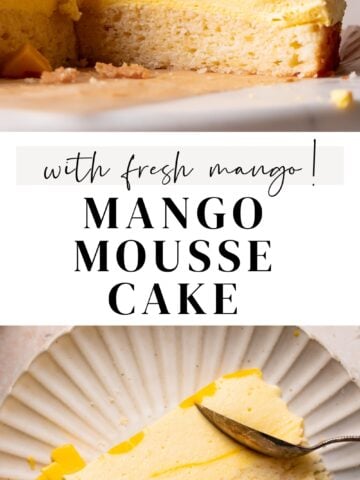
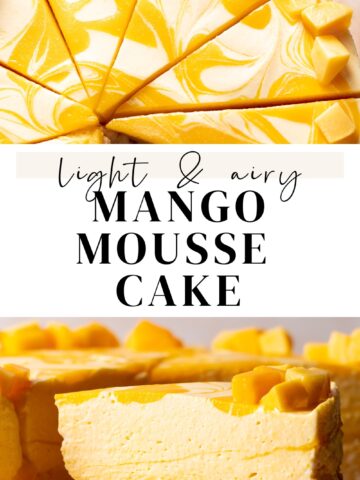

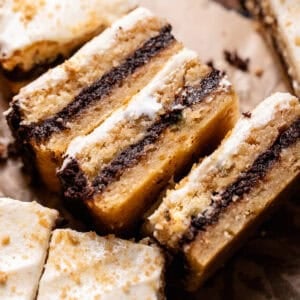
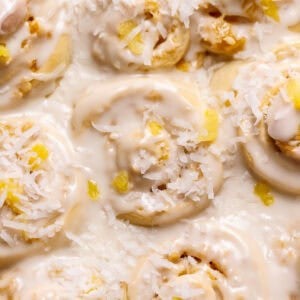








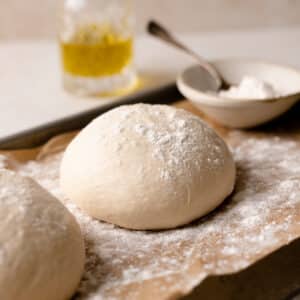
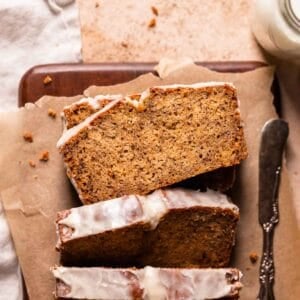
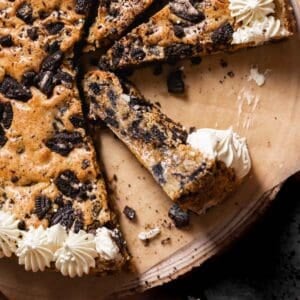


I made it again with sour cream this time. The same thing happens, it fluffs up nicely and then falls flat when taken out of the oven and is chewy not fluffy like a cake should be.
I have an oven thermometer which reads it is at 350F, but perhaps the thermometer is wrong?
Was very very careful not to over mix, and made sure all ingredients were at room temp.
Grrr, should I raise the oven temp a bit? I am completely stumped as I generally have great success with my baking!!
Hi Ellie! Thank you so much for your feedback. Since you’re using an oven thermometer and being careful with mixing, my first thought is the cake might be slightly underbaked. You could try adding a few more minutes to the bake time to ensure the center is fully set. Also double-check the pan size and use a light-colored metal pan if possible, dark pans can cause the outside to bake too quickly while the center stays underdone. I also want to mention that the reverse creaming method yields a tight, velvety crumb that won’t be quite as fluffy as a sponge cake. That might be part of what you’re noticing in the texture! I really appreciate you taking the time to leave such thoughtful feedback and hope the next batch turns out perfectly!
I made the cake twice, but both times it didn’t ri way it should have and the cake was kind of chewy…any help on this? Please
The flavor is great, just the cake not up to par.
Would appreciate help.
Thanks, ellie
Hi Ellie! Thank you for trying the recipe, I’m really glad you enjoyed the flavor. If the cake didn’t rise properly and came out chewy, it could be due to over mixing. It’s super important to mix just until the flour is moistened and the batter is smooth, as too much mixing can lead to a dense, chewy texture.
One more question please: Is the yoghurt you use in this recipe quite dense? The yoghurt we can purchase here in Tokyo is quite soft , do you think that may have an impact as well?
Great question! Yes, the sour cream is quite thick. If the yogurt available to you is much softer or more liquidy, that could definitely affect the texture and make the cake denser or a bit gummy. If you’re swapping, a thicker Greek-style yogurt would be the best match!
I have purchased some sour cream this morning and am going to try the cake again. Am just hanging out until all the ingredients come to room temp!!
Hello how long will this cake keep at room temp assuming it was chilled 3-4 hours to set as per your recipe? I am bringing it to someone’s birthday party so wondering how long it can sit out at room temp before the mousse starts to melt. Thanks.
Hi Rachel! Once it’s been properly chilled to set, the cake should be fine at room temp for about 1.5 to 2 hours, depending on how warm the environment is. If it’s a hotter day or the room is warm, I’d try to keep it chilled as long as possible before serving to make sure the mousse holds its shape.